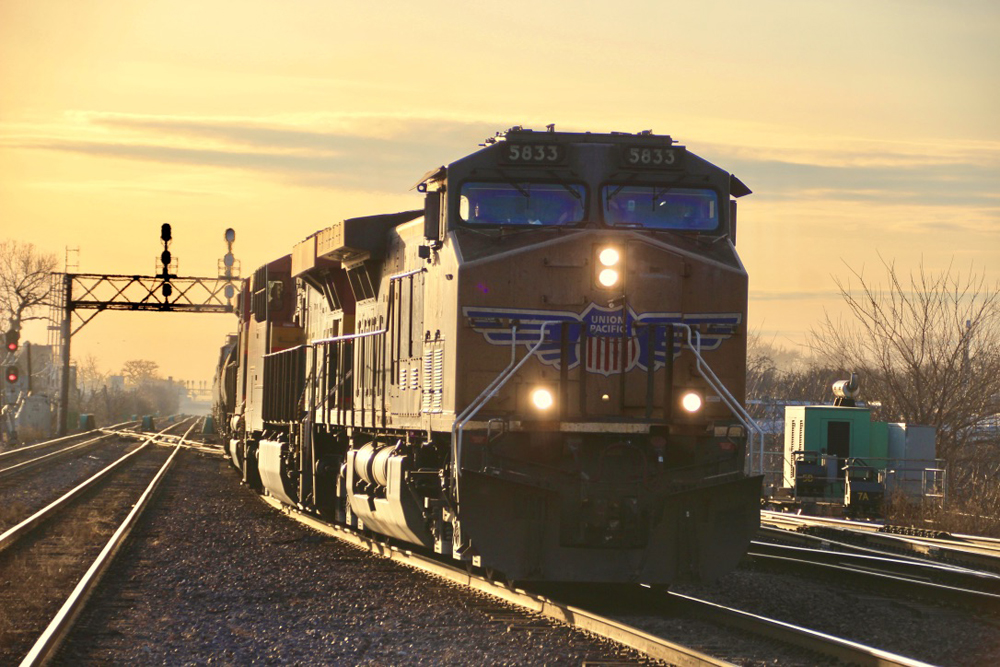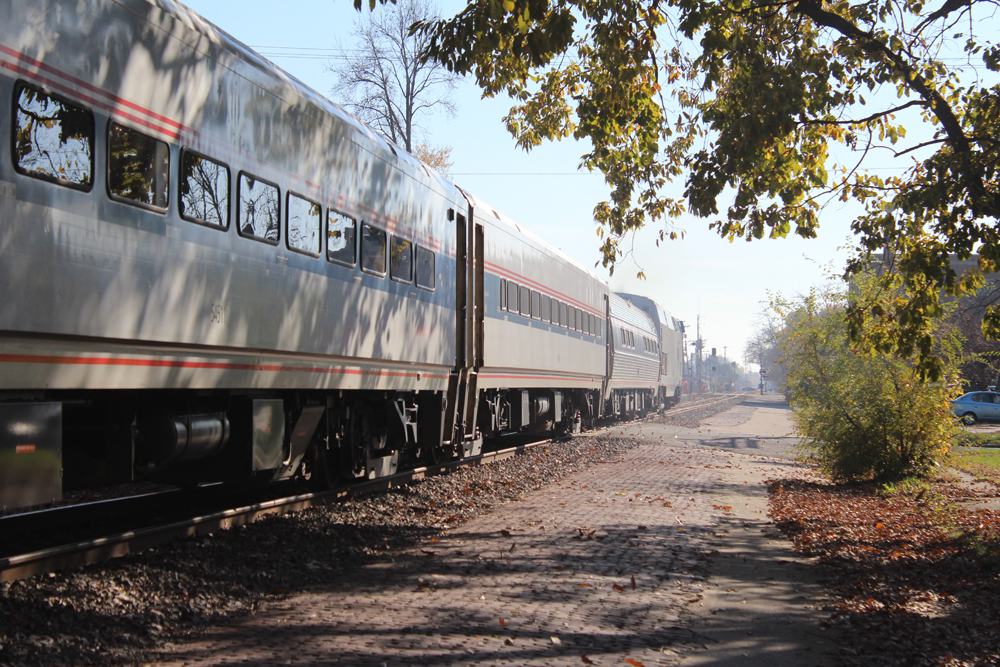
OMAHA, Neb. — Union Pacific’s request that shippers reduce the number of private freight cars in their pipelines – or face strict quotas starting on Monday – has been met with a mix of understanding and outrage.
Some shippers say they understand UP’s need to reduce car inventory to help ease congestion that has slowed service.
But others, facing the prospect of significant reductions in the number of cars UP will accept each day, are angry and have complained to the Surface Transportation Board.
UP sent an email to customers on Saturday morning outlining the railroad’s goal of removing 15,000 private cars from current inventory. UP is pulling nearly 3% of railroad-owned cars from the system.
The number of cars on the railroad has grown over the past 60 days and in the week ending April 8 topped 300,000 for the first time since 2018, when UP was in the midst of an operational funk that lasted more than a year. The railroad is short of crew and power, and says it’s hiring aggressively while pulling locomotives out of storage.
When a railroad’s average train speed drops and terminal dwell rises, transit times increase and service becomes more erratic. Shippers typically add cars to their fleets as rail service slows, which tends to exacerbate congestion and delays.
UP asked customers to voluntarily reduce the number of privately owned cars they order and load. If voluntary measures don’t work, UP said it would have to begin using embargoes to meter traffic.
One shipper who complained to the STB says UP would only accept eight loads per day – down from 24 or so cars the company typically ships on weekdays. The shipper does not have a trucking alternative to UP. Other shippers said their allotment was being reduced to four cars per day from 10.
People familiar with the matter say this requested level of reduction is typical. UP declined to put those shippers’ potential reductions into context.
“Union Pacific’s request is particular to each customer and calculated to achieve the overall inventory level needed to restore fluidity across the network,” spokeswoman Kristen South says. “I cannot disclose the ask of each customer; however, I want to emphasize we are also removing Union Pacific-controlled cars. We will continue to work one-on-one with our customers to reduce congestion while avoiding shutdowns or other customer risks.”
Some shippers properly manage their freight-car fleets, match car orders with actual carloads, and quickly load and unload cars. Others routinely order more cars than they can possibly load, or have more loads waiting in a serving yard than their receiving facility can handle.
One industry insider says shippers are part of the problem. But another refuses to place any blame on shippers, noting they would not have to maintain larger car fleets than necessary if railroads would provide consistent and reliable service.
The big four U.S. railroads – BNSF Railway, CSX Transportation, Norfolk Southern, and UP – are experiencing service problems to various degrees, most of which are the result of shortages of crews and locomotives.
Last week, the STB ordered the four railroads’ executives to appear at hearing on service issues scheduled for April 26 and 27. Board Chairman Martin J. Oberman has blamed the service problems on job cuts related to Precision Scheduled Railroading and the industry’s focus on reducing operating ratios.
“Union Pacific’s network speed is bouncing along its bottom and train delays due to crew shortages over the last month and cars sitting idle are now the highest we’ve seen since the Dry Canyon Bridge outage last summer,” Rick Paterson, an analyst for Loop Capital who closely follows rail performance metrics, wrote in a note to clients last week.
The number of daily train delays due to a lack of power has risen over the last month on BNSF, NS, and UP.
“The last time the industry had a sustained power problem was 2014. In theory this shouldn’t be happening because the switch to PSR by most of the industry freed up a lot of locomotives, so nobody should be short,” Paterson writes. “The likely reason is just a generally high level of inefficiency, so while the industry has locomotives it’s just hard to get them in the right place at the right time. If that’s the case it should naturally resolve itself when crew shortages are rectified, but worth monitoring in the interim.”














As a small stockholder I agree that railroad management puts too much emphasis on short term profits. Although all the railroad stocks I own have gone up, it means nothing if long term the railroads are loosing traffic due to poor service. At some point those Wall Street investors who constantly want higher profits in the short term will end up loosing some of their investment due to poor service chasing customers to alternate modes of transportation. They also risk going back to the days of heavy regulated service and pricing from the government if they can not provide good service to their captive customers that must rely on railroad service.
Here is yet another article from Trains that claims, “”The railroad is short of crew and power,”” [sic]. Would you PLEASE STOP falsely reporting these railroads are short of power? ALL of the railroads have engines in storage, put their by their own decisions & greed.
Management laid off workers & stored or sold off engines before Covid. Those are the facts and that is what needs to be repeated in every article about supply disruptions. They did it to themselves due to their greed & that is the root cause.
Forcing people to work? Unemployment is at 3.6% railroads have miles of locomotives that are in storage. This is all about bad management, lack of foresight and treating rail crew like garbage.
The land barges tie up yards trying to get in. Other trains trying to get in tie up the mains. To open the mains trains are placed into sidings which tie up the sidings. The trains sit in the sidings with the power needed for outbound trains at the yard. So those trains in the sidings sit for days as the power is removed and taken to the yards for the outbound trains. Add to that the fact the companies hauling train crews are all short of drivers. So the railroads have problems transporting crews with many having to have freight trains stop to pick them up or drop them off. More delay. And in those yards with no power for outbound trains one usually can find some power with stacks capped sitting stored.
UP, CSX, and NS need to finally admit that PSR and the landbarge-sized trains and reduction of the train crew ranks that operating plan demands has not done them any good for the long term. But they have poisoned the well and reversing course by going to short and frequent trains may be difficult to implement because many of furloughed train crews seem not willing to return. And to implement such a turnaround will require restoration of much of the mainline track capacity they’ve ripped up. So it’s quite a hole they’ve dug for themselves.
What we are witnessing is the “Mother of all Meltdowns”. The freight railroads have been regularly scheduling these meltdowns for almost 20 years now. Have any of you ever heard of any US industry that encounters “meltdowns” much less has them on a regular basis like the freight railroads do. This is like the swallow coming back to Capistrano or the salmon swimming upstream to spawn. Railroad management stupidity is at an all-time high. This debacle will lead to death of Staggers and re-regulation of the carload segment which is now entirely justified. Railroad management has absolutely NO creditably left whatsoever.
To improve service, we are decreasing service…
I am a bit confused. Except for recrewing issues– which is admittedly important if crew numbers are down– how will increasing the speed of trains over the line help if the yards are overstuffed/blocked. If the trains are too long to easily get into the yard, won’t the line into the yard just get longer if you get the trains to the outskirts of the yard faster.
Power-short with hundreds of locomotivrs parked in the desert.
Short on crew after laying-off so many of them and imposing working conditions that are appalling to the younger generation.
No doubt, it’s the shippers’ fault
As I read about trains stalling because the company rules preclude the use of the idle engine in the consist, I think that that’s a clue to the problem. Use the power to get the train over the road! Penny wise and $ stupid.
Could this problem be solved if the number of Class 1 railroads were increased? There are only one or two options for most rail shippers. What if there were three or four?
Would not make a difference if there were 2 or 10, the problem is not enough train crews, no matter how many RR’s you have, the only solution is to force people that are on unemployment that are capable of doing the job and are not drug addicts to work…an by work I mean any job they are capable of being trained for.
The problem is not people unwilling to work. The problem is the rr’s laying off thousands of workers over and over. The get tired if the back and forth, so they go find other jobs and give a big middle finger to the rr when they get recalled.
I value consistency and predictability. I prosper if I read the same news story every weekday morning. Whether it’s Monday, Tuesday, Wednesday, Thursday or Friday, I need to dial up this web site to read what a dumpster fire Uncle Pete has become …. and the details vary little from one day to the next.
Bike season in Wisconsin starts right around now. I’ll go for a ride up to Butler Yard to see the laid-up locomotives parked there, the railroad that complains it’s short of power..